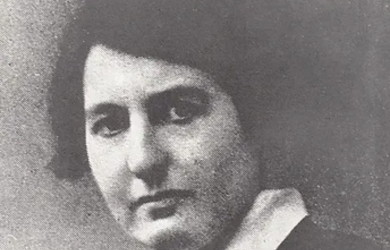 Stefa Wilczyńska was a student of natural science and education at the University of Liège in Belgium. While in Switzerland, she attended an advanced training program on the pedagogy of Maria Monstessori, and met Dr Henryk Goldszmit, the distinguished physician and educator better known by his pen-name Janusz Korczak. Wilczyńska requested that he join her in Warsaw as a pediatrician at an orphanage, and he did so, leading to a close association between the two. In 1938, Wilczyńska visited Palestine, this time with the intention of settling in Kibbutz Ein Harod.
Stefa Wilczyńska was a student of natural science and education at the University of Liège in Belgium. While in Switzerland, she attended an advanced training program on the pedagogy of Maria Monstessori, and met Dr Henryk Goldszmit, the distinguished physician and educator better known by his pen-name Janusz Korczak. Wilczyńska requested that he join her in Warsaw as a pediatrician at an orphanage, and he did so, leading to a close association between the two. In 1938, Wilczyńska visited Palestine, this time with the intention of settling in Kibbutz Ein Harod.
The frequent reports of an impending war in Europe troubled her, and she resolved to leave everything and return to Poland to be with “her children” and Korczak. In April 1939, Wilczyńska wrote to her friend Yocheved Tzuk from Kibbutz Ein Harod, "I am convinced that, in the current situation, my place is with them. For this reason, I am setting out. If the situation allows me to return to be with you […] I will do so."
Throughout the war, Wilczyńska and Korczak tried to preserve the innocence of childhood for the children under their care. During the liquidation of the Warsaw ghetto in early August 1942, Wilczyńska and Korczak chose to join the 200 condemned children on their journey to Treblinka, despite having the option to remain in the ghetto. They were all murdered upon arrival.